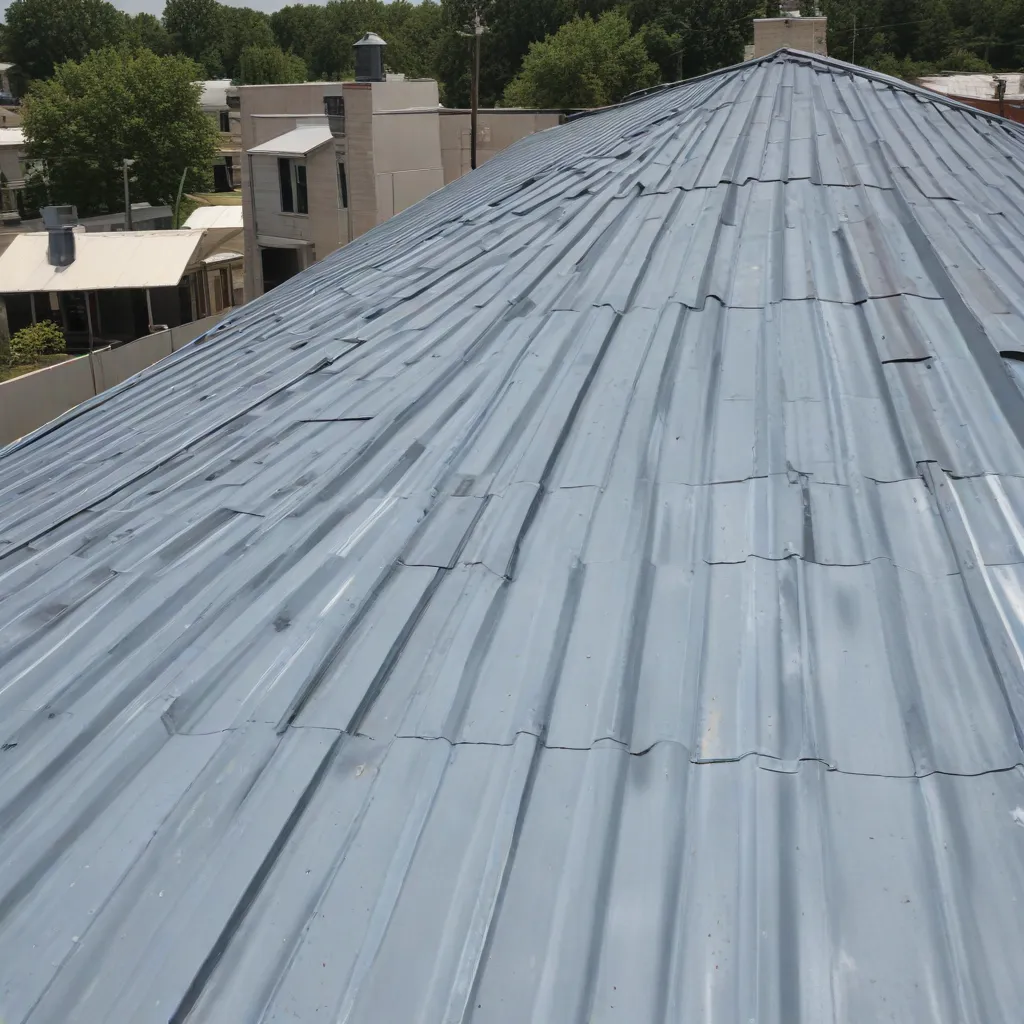
In the rapidly evolving world of roofing, metal continues to stand out as a versatile and high-performing solution. While metal roofs have long been associated with commercial and industrial applications, their advantages are now driving a surge of interest in the residential and light commercial sectors. As homeowners and building owners seek to optimize their properties’ energy efficiency, durability, and aesthetic appeal, the case for retrofitting existing metal roofs has never been stronger.
Evaluating Roof Performance Considerations
When it comes to roofing systems, three key factors often take center stage: energy efficiency, thermal insulation, and weatherproofing. These interrelated components are crucial in ensuring a building’s overall comfort, safety, and long-term cost-effectiveness.
Energy Efficiency: A well-designed metal roof can significantly contribute to a building’s energy efficiency. Metal’s inherent reflective properties allow it to deflect a significant portion of the sun’s rays, reducing the amount of heat that penetrates the building’s interior. This, in turn, lessens the burden on the HVAC system, resulting in lower energy consumption and utility bills. By strategically incorporating cool roof coatings or selecting light-colored metal panels, the roof’s solar reflectance can be further enhanced, amplifying these energy-saving benefits.
Thermal Insulation: The insulation properties of a roof assembly play a crucial role in maintaining indoor temperature and comfort. Metal roofs, when combined with proper insulation, can create a highly effective thermal barrier, reducing heat transfer and minimizing the need for excessive heating or cooling. The incorporation of continuous insulation across the entire roof surface, coupled with the metal’s low thermal mass, can yield impressive energy savings and year-round comfort.
Weatherproofing: Metal roofs are renowned for their exceptional weatherproofing capabilities. The robust construction, interlocking seams, and sophisticated flashing systems of modern metal roofing solutions provide exceptional resistance to wind, rain, hail, and even extreme weather events. This heightened level of protection helps safeguard a building’s structural integrity, minimizing the risk of costly repairs and ensuring the safety of its occupants.
Retrofitting Techniques for Metal Roofs
Upgrading an existing metal roof can unlock a wealth of performance enhancements. Various retrofitting techniques are available, each tailored to address specific needs and challenges.
Roof System Modifications: One approach involves modifying the existing roof system by adding layers of insulation, upgrading the underlayment, or replacing the roofing panels with more advanced options. These strategic enhancements can dramatically improve the roof’s thermal efficiency, weatherproofing capabilities, and overall longevity.
Material Upgrades: Another avenue is to focus on material upgrades, such as transitioning from bare metal panels to factory-coated metal with enhanced reflective qualities or corrosion resistance. The integration of cutting-edge coatings and finishes can elevate the roof’s aesthetic appeal while enhancing its performance.
Installation Processes: The manner in which the retrofitting is executed can also have a significant impact on the final outcome. Careful attention to proper fastening techniques, seam detailing, and seamless integration with existing structures can ensure a robust, long-lasting, and visually harmonious installation.
Unlocking the Benefits of Metal Roof Retrofitting
By embracing metal roof retrofitting, building owners can unlock a treasure trove of benefits that extend far beyond the immediate roofing system itself.
Improved Sustainability: The energy-efficient nature of metal roofs, combined with their extended lifespan and recyclability, make them a remarkably sustainable choice. Retrofitting an existing metal roof can dramatically improve a building’s environmental footprint, aligning with the growing demand for eco-friendly construction and renovation practices.
Enhanced Durability: Metal roofs are renowned for their exceptional resistance to weathering, impact damage, and corrosion. By upgrading an existing metal roof, building owners can enjoy the peace of mind that comes with extended service life, reduced maintenance requirements, and a lower risk of costly repairs.
Cost Savings: While the initial investment in a metal roof retrofit may be higher than a traditional roofing replacement, the long-term cost-savings can be substantial. The energy efficiency and low maintenance needs of metal roofs translate into significant reductions in utility bills and reduced repair expenses over the life of the roof. This makes metal roofing a sound financial investment for building owners.
Industry Regulations and Standards
As the demand for high-performance roofing solutions continues to grow, the roofing industry has responded with a comprehensive framework of regulations and standards to ensure quality, safety, and sustainability.
Building Code Compliance: Metal roof retrofitting must adhere to the applicable building codes and safety regulations in the local jurisdiction. This includes meeting wind uplift resistance, fire safety, and structural integrity requirements to ensure the roof can withstand the unique challenges of its geographical location.
Energy Efficiency Regulations: Many regions have implemented energy efficiency standards for roofing systems, often tied to tax incentives or other financial benefits. Careful selection of reflective coatings, insulation values, and ventilation strategies can help metal roof retrofits comply with these regulations and maximize energy savings.
Sustainable Design Guidelines: The growing emphasis on environmental stewardship has given rise to green building certifications and sustainable design guidelines. Metal roofs, with their recyclable materials and energy-efficient properties, can contribute significantly to a building’s overall sustainability, making them an attractive choice for owners and designers alike.
By staying abreast of the latest industry regulations and standards, roofing professionals can ensure that metal roof retrofitting projects not only deliver exceptional performance but also align with the evolving priorities of the built environment.
Conclusion
As the roofing industry continues to evolve, the case for metal roof retrofitting has never been more compelling. By prioritizing energy efficiency, thermal insulation, and weatherproofing, building owners can unlock a wealth of benefits that extend far beyond the immediate roofing system. From enhanced sustainability and durability to long-term cost savings, the advantages of metal roof retrofitting are undeniable.
By leveraging the expertise of experienced roofing specialists and staying attuned to industry regulations and standards, building owners can embark on a metal roof retrofitting journey that not only improves the performance of their property but also aligns with the growing demand for high-quality, eco-friendly construction solutions. The future of roofing is undoubtedly taking shape, and metal retrofitting is poised to play a pivotal role in shaping that future.

























